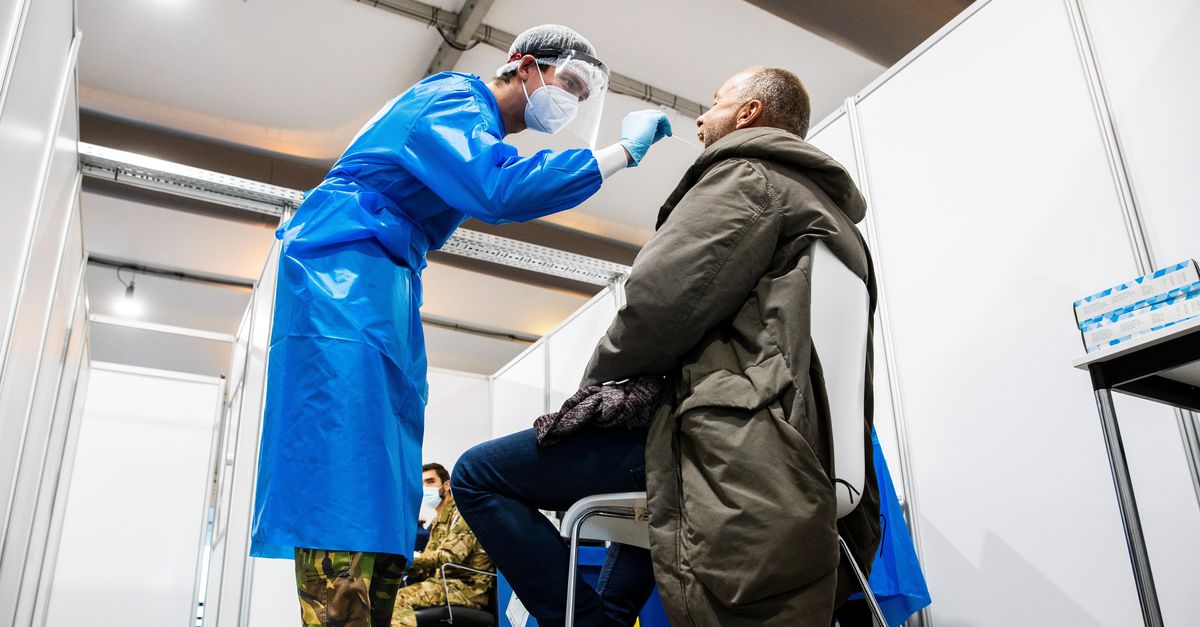The number of positive coronavirus tests last week was about 35 percent higher than the week before, despite the lockdown. On average, more than 16,000 people test positive each day, RIVM reported on Tuesday in his weekly numbers. This appears to have put an end to the decline in infection numbers that began at the end of November. The percentage of positive tests has also risen sharply, from 23 to 30 percent.
The number of hospital admissions continued to decline, but that decline is slowing. Last week, the decline was 14 percent, compared to 26 percent the previous week. The decline in the number of IC admissions is also slowing, in comparable proportions.
All Dutch regions showed an increase in the number of infections last week. On average, this concerns 639 people per 100,000 inhabitants. The highest number was reported in Amsterdam-Amstland, followed by Kennemerland, Zaanstrek-Waterland and Rotterdam-Regenmond. North Limburg has the lowest number of positive test results.
The increase in the number of infections is mainly attributed to people in their twenties, followed by teenagers and people in their thirties. At primary school age, the number of infections actually decreased by about a third. “This decline is a clear consequence of school closures, along with holidays,” says Susan van den Hove, head of the Center for Epidemiology and Infectious Disease Surveillance at RIVM. She found that the strong increase among young people is not surprising: “We’ve also seen in previous waves that the spread starts in this group. These are the people who have the most social contacts, even during lockdown.”
Infections at home
The source and contact research showed another effect of the lockdown and holiday: The percentage of infections during home visits doubled, to 30 percent. About 60 percent of injuries last week occurred within the family, and only 4.5 percent at work.
The holiday also shines through in the number of people who have been tested positive and who have recently traveled abroad. Last week that was 6.5 percent, more than double compared to the previous week. Of these, nearly 20 percent were in Austria, 13 percent in France, 11 percent in Belgium, and 11 percent in Germany. “But that doesn’t necessarily mean that these people brought the virus from those countries,” van den Hoof nuances. “They may already have the virus with them, or they may have passed it on to each other within the travel group.” Then this increase would simply reflect that people were on vacation.
RIVM attributes the rapid increase in the number of positive tests to the infectious variant of the coronavirus, Omikron, which has been prevalent in the Netherlands since the end of December. In the UK, this variant gained a foothold about two weeks earlier than in the Netherlands. Since then, the number of infections has risen sharply. Two weeks ago, the number of infections per 100,000 inhabitants was the same as in the Netherlands now; Currently, the UK has more than double the number of new infections per 100,000 people per day, which is around 1,500.
Hospital admissions are also increasing in the UK, but at a slower rate than during previous waves. Remarkably, the IC numbers have been stable for weeks. Can we expect hospitalization and IC in the Netherlands not to be so bad? “It’s too early to say that,” says van den Hoof. “Omikron is still a relatively new genre, and it is also expanding in the UK.”
The first figures in the UK come from London, a city with a relatively young and diverse population with many previously infected people. So it is difficult to predict how the virus will behave in the Netherlands, with different populations, different behavior and other measures. “We’re still seeing lower purchase numbers in the Netherlands,” says van den Hoof, but that’s still largely about the delta formula. We anticipate an increase in admissions as Omikron reaches nursing homes and nursing homes.”
:strip_icc()/s3/static.nrc.nl/bvhw/files/2022/01/web050122bingemeentec.png)
This increase is likely to be dampened by a promotion campaign. In addition, it appears that Omikron Less disgusting Is delta: Laboratory tests show that the virus infects lung cells less often and remains mainly in the upper respiratory tract. This picture is consistent with better-than-expected hospital numbers in the UK, and earlier in South Africa. However, van den Hoof remains very cautious. “With infection rates rising rapidly, even a smaller proportion of serious illnesses can once again put a significant strain on health care,” she stresses. “And it certainly isn’t just about international studies.”
A version of this article also appeared on NRC on the morning of January 5, 2022

“Lifelong zombie fanatic. Hardcore web practitioner. Thinker. Music expert. Unapologetic pop culture scholar.”








